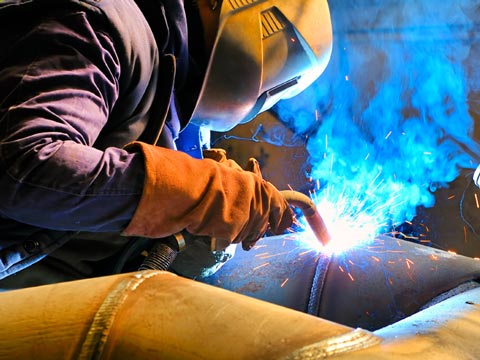
Welding is a common process for joining metals using a large variety of applications. Welding occurs in several locations, from outdoors settings on rural farms and construction sites to inside locations, such as factories and job shops. Welding processes are fairly simple to understand, and basic techniques can be learned quickly.Welding is the joining of metals at a molecular level. A weld is a homogeneous bond between two or more pieces of metal, where the strength of the welded joint exceeds the strength of the base pieces of metal.
At the simplest level, welding involves the use of four components: the metals, a heat source, filler metal, and some kind of shield from the air. The metals are heated to their melting point while being shielded from the air, and then a filler metal is added to the heated area to produce a single piece of metal. It can be performed with or without filler metal and with or without pressure.
There are several types of welding that are used today. Gas Metal Arc Welding (GMAW) or MIG, Gas Tungsten Arc Welding (GTAW) or TIG, Flux Core Arc Welding, and Stick Welding are the most common found types in industrial environments.
Common Terms
There is a large vocabulary of specific welding terms. Knowing these terms is essential to learning about welding as well as understanding how to weld.
- Arc Burn
- Arc burn is a metallurgical notch caused by ground clamps or striking an arc on the base metal at any point other than the weld groove or immediate area that will be covered with the weld cap.
- Base Metal
- The base metal is the metal that is to be welded or cut. It is commonly referred to as the workpiece.
- Butt Weld
- A butt weld is a joint between two workpieces that are aligned on the same plane.
- Cover Pass
- The cover pass finishes the welded joint. It is higher than the adjacent surface and overlaps the groove.
- Filler Pass
- The filler pass follows the hot pass and fills the weld groove flush, or almost flush, with the surface of the workpieces.
- Fillet Weld
- A fillet weld is the joining of two workpieces with triangular cross-sections at approximately 90 degrees.
- Heat-Affected Zone
- The heat-affected zone is the area of metal near the weld metal that was not melted during welding, but did experience changes in its mechanical properties and/or microstructure due to the heat applied.
- Hot Pass
- The hot pass is the pass immediately following the stringer pass.
- Joint
- The hot pass is the pass immediately following the stringer pass.
- Plug Weld
- Plug welding is filling a hole or gap in one piece with weld or filling a hole and attaching the piece with the hole to the surface of another base piece.
- Polarity
- Polarity is the manner in which the electrode holder and workpiece connect to the electrical supply. This can be either direct current electrode negative, or DCEN, meaning straight polarity or direct current electrode positive, or DCEP, meaning reverse polarity.
- Spot Weld
- Spot welding is the process in which the weld pieces are pressed together with pressure, then a current is passed through them in a small spot and the two pieces are melted together at that location. Spot welding can be performed on metals from 0.5 to 3 mm.
- Stringer or Root Bead
- The stringer pass, or root bead, is the first pass in the weld. It is typically made without any weaving motion.
- Weld Groove
- Weld groove refers to a V- or U-shaped groove created by the beveling of the workpiece edges that will be joined.
- Weld Metal
- The weld metal is the portion of the base metal that is melted during the welding process.
- Weld Pass
- A weld pass is a single progression of welding along the joint. After a complete pass, it is referred to as a weld bead.
- Welding Electrode
- In arc welding, the electrode is used to pass current through the workpiece to fuse the two pieces together.
Types of Weld Joints
There are five common types of weld joints used in all types of welding: corner joints, edge joints, lap joints, tee joints, and butt joints.
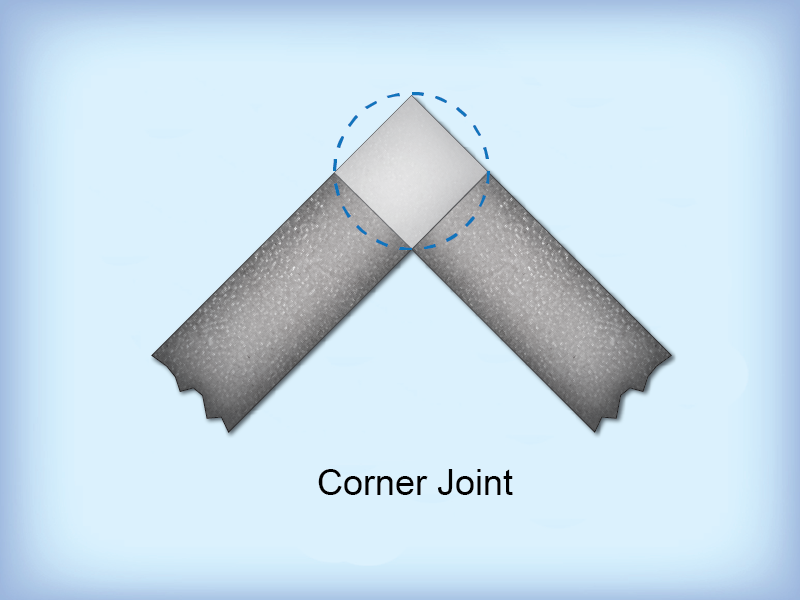
Corner Joint – When two pieces are perpendicular to each other and one piece’s edge meets the end of the other piece’s surface, it is referred to as a corner joint. Common corner joints are edge to edge, flush corner, and half overlap, each with their own benefits.
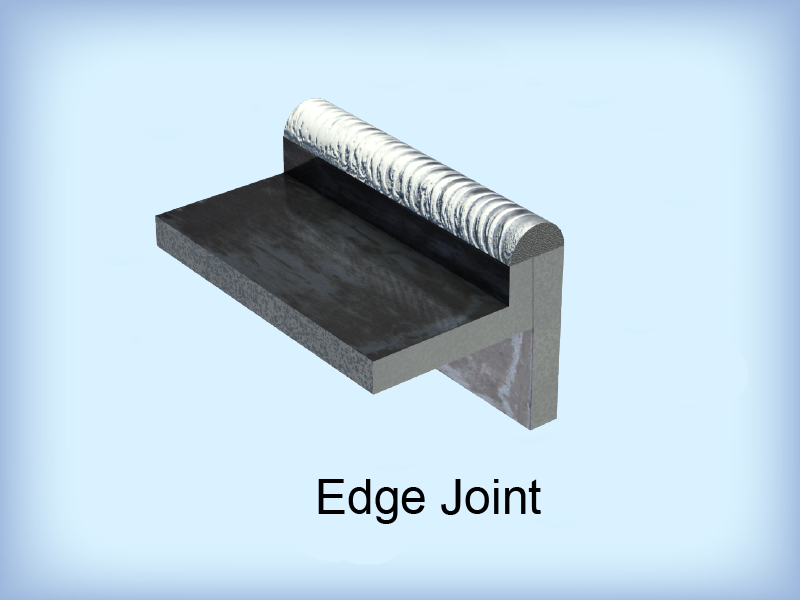
Edge Joint – An edge joint is when two edges of weld pieces are adjacent and in parallel planes with each other. The weld does not penetrate completely through the joint thickness so it should not be used in high stress or pressure situations.
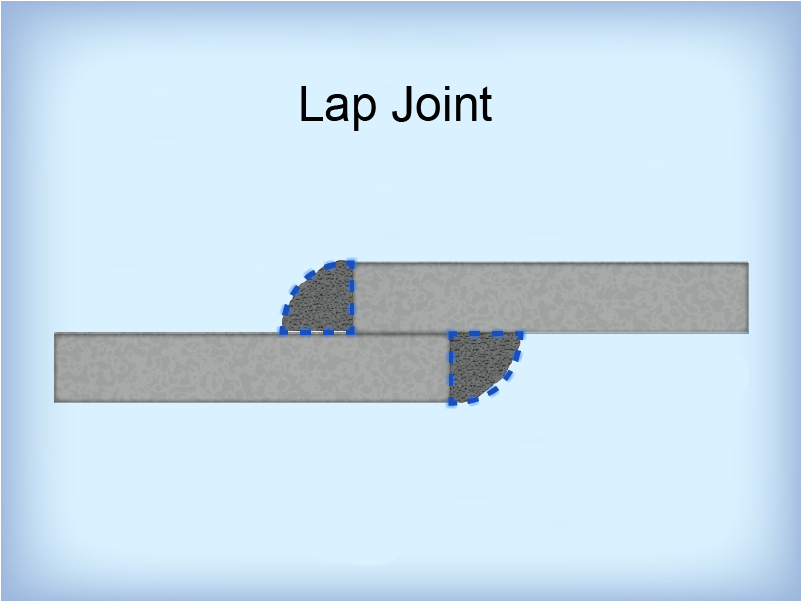
Lap Joint – A lap joint in welding occurs when a bead is made on the surface of one workpiece and the edge of the other piece. It should be performed with no gap between the two pieces.
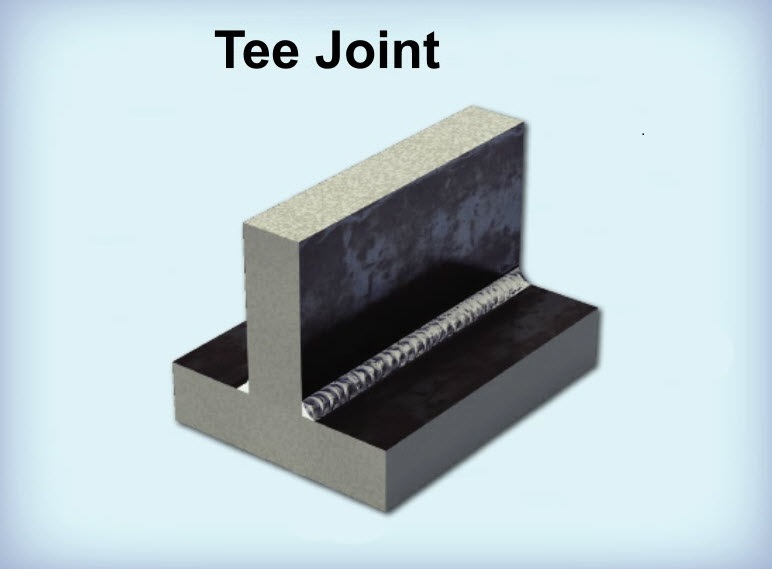
Tee Joint – The edge of one workpiece meeting the surface of the other workpiece with material on both sides of the edge is called a tee joint.
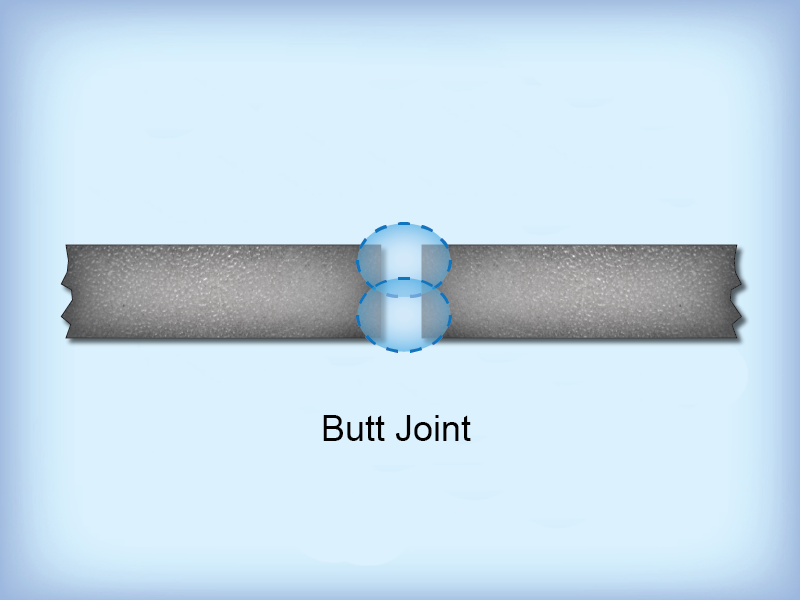
Butt Joints – When two workpieces are aligned on the same plane and joined by a weld along their edges, it is called a butt joint. They are used where high strength is required because they are reliable and can withstand stress better than any other type of weld.
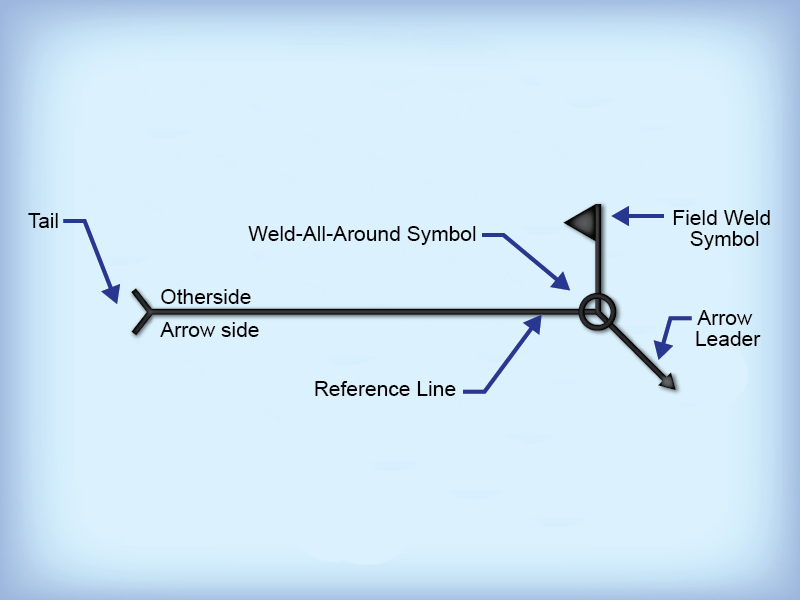
Welding Symbols
Welding can be performed in thousands of combinations regarding position, welding type, welding dimensions, and many other varying components of welding.
Due to its diverse nature and the precise needs of the industrial world, a complex collection of symbols has been created to dictate exact weld details. This allows designers to precisely indicate the type, style, and other details of a weld using a symbol on a print for the piece being manufactured or otherwise altered.
The joint is the basis of reference for welding symbols. It has an arrow pointing to it and connects to the reference line. Including the arrow, there are eight elements of a welding symbol, explained below:
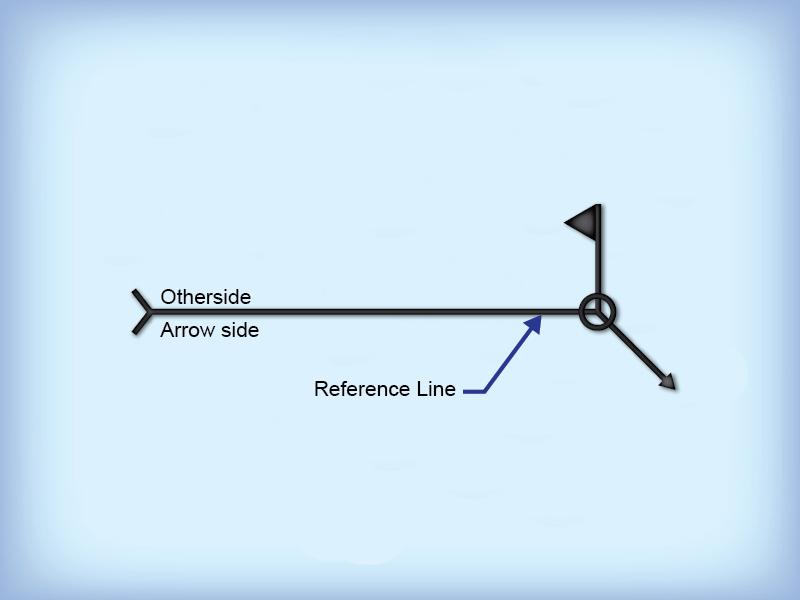
Reference Line – The reference line is used to designate the type of weld, weld location, size of the weld, extent of the weld, contour of the weld, and many other pieces of vital information.
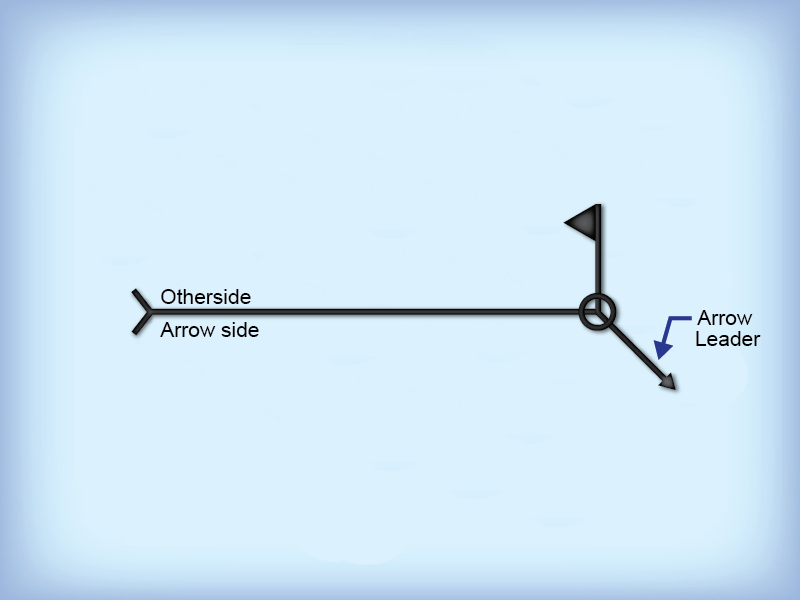
Arrow and Other Side – All welded joint symbols have an arrow and other side, which is opposite the arrow side and used to indicate the location of the weld with respect to the joint.

Weld Symbols – Weld symbols, as opposed to welding symbols, indicate the desired type of weld.
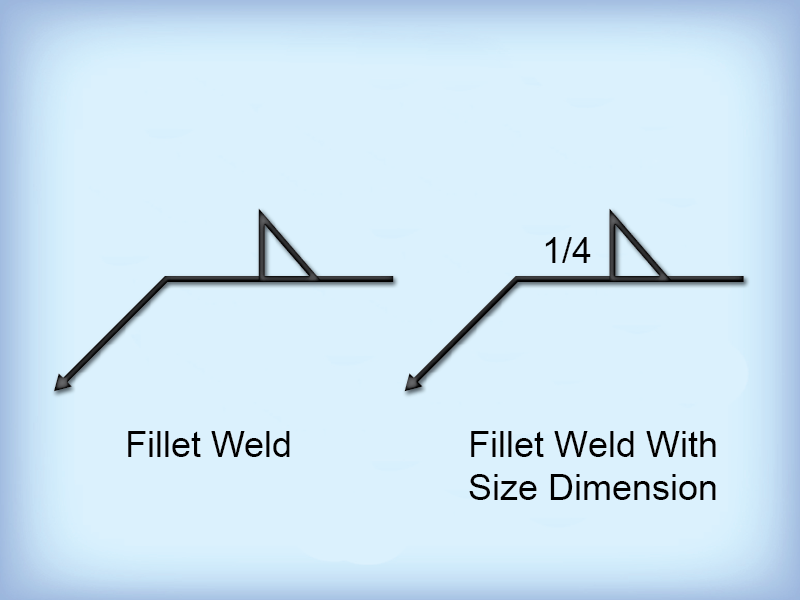
Dimensions and Other Data – This information provides the details regarding the size of the weld and any other data needed to find the proper weld size.
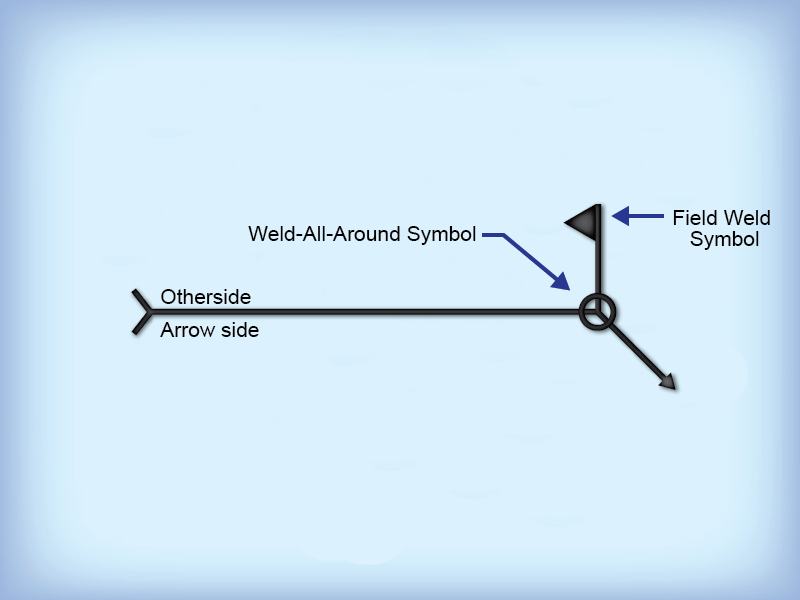
Supplementary Symbols – Supplementary symbols give information on whether the weld is a “weld all around” or a “field weld.” It also indicates the desired contour of the weld.
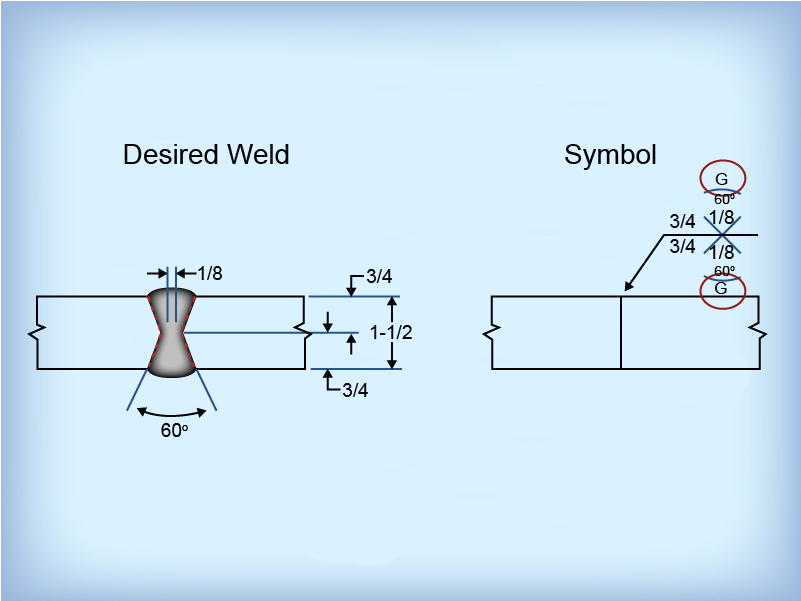
Finish Symbols – The finish symbol dictates how the weld should be shaped or ground after the completion of the weld.
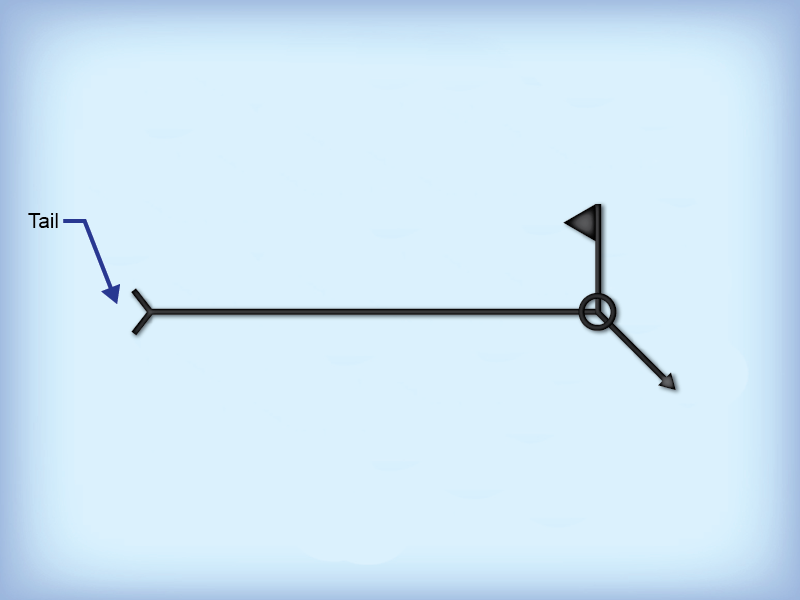
Tail – The tail of the symbol is used to designate the process by which the metals will be welded. It is also used to indicate the welding specifications, process, and other supplementary information regarding the weld.
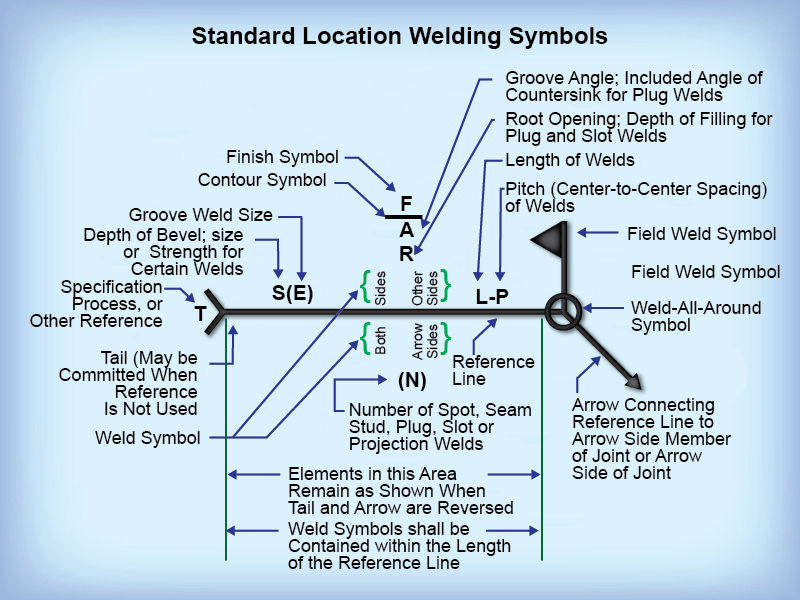
Specifications, Process, or Other Information – The process of the weld includes details such as the type of filler rod, whether root chipping is required, and other pertinent data. There are letter designations for each type of welding process that can be performed.
The expert consultants at Technology Transfer Services are available to assist you with anything industrial related, including welding. Give us a call today at (813) 908-1100 to see what TTS can do for you!

